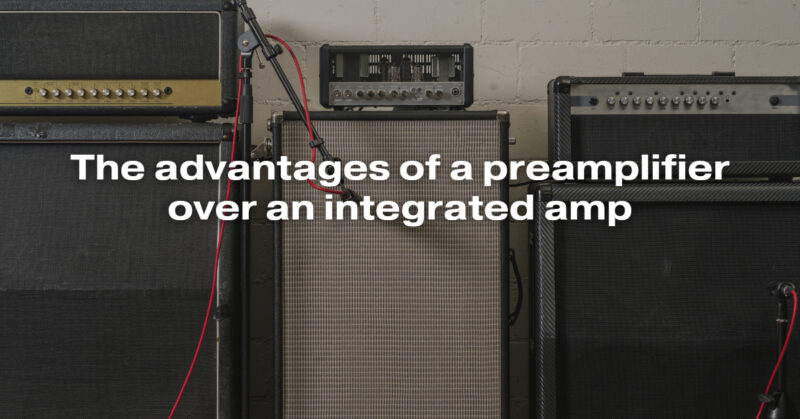In the world of high-fidelity audio, the choice between a dedicated preamplifier and an integrated amplifier can be a crucial decision for audiophiles and music enthusiasts. Both components play essential roles in shaping the audio signal and driving speakers, but they differ significantly in terms of functionality and versatility. This article explores the advantages of choosing a preamplifier over an integrated amplifier and why some audiophiles prefer this approach.
1. Customization and Modularity
One of the primary advantages of using a preamplifier is the ability to customize and build a modular audio system. With a dedicated preamplifier, you have the freedom to mix and match different preamp and power amp components from various manufacturers. This modularity allows you to create a tailored audio setup that meets your specific requirements and preferences.
For example, you can pair a high-end preamplifier with a power amplifier that perfectly complements your speakers, ensuring optimal synergy and sonic performance. This flexibility is especially valuable for audiophiles who enjoy experimenting with different components to achieve their desired sound signature.
2. Upgradability
A dedicated preamplifier offers greater upgradability compared to integrated amplifiers. If you decide to improve your audio system over time, you can easily replace or upgrade the preamplifier while keeping your existing power amplifier or speakers. This incremental approach to upgrades can be more cost-effective in the long run, allowing you to achieve higher audio quality without the need to replace the entire integrated amplifier.
3. Improved Signal Purity
Dedicated preamplifiers are designed with a singular focus on signal processing and control. They prioritize signal purity and often feature high-quality components, advanced circuitry, and meticulous craftsmanship. This focus on audio fidelity results in cleaner and more transparent signal amplification, preserving the nuances and details of the original audio source.
Integrated amplifiers, on the other hand, combine both preamplifier and power amplifier functions in a single chassis, which can lead to electromagnetic interference and compromise signal integrity. Dedicated preamplifiers are typically shielded and isolated from power amplification components, reducing the potential for interference and ensuring a cleaner audio signal.
4. Precise Control and Features
Dedicated preamplifiers often provide more extensive control options and features for fine-tuning your audio system. These controls may include precise volume adjustments, tone shaping (bass and treble controls), balance adjustments, and input selection. The availability of these features allows you to tailor the sound to your preferences and adapt it to different audio sources and listening environments.
5. Audiophile-Grade Components
Many dedicated preamplifiers are built using audiophile-grade components, such as custom-designed capacitors and transformers. These components are selected for their exceptional performance and durability, contributing to a higher level of audio quality and long-term reliability.
Conclusion
While integrated amplifiers offer convenience and simplicity, dedicated preamplifiers provide audiophiles and music enthusiasts with a range of advantages, including customization, upgradability, improved signal purity, precise control, and access to audiophile-grade components. The choice between a preamplifier and an integrated amplifier ultimately depends on your audio goals, preferences, and budget. For those who prioritize audio quality, flexibility, and the ability to tailor their audio system to perfection, a dedicated preamplifier can be a compelling choice in the pursuit of high-fidelity sound.


